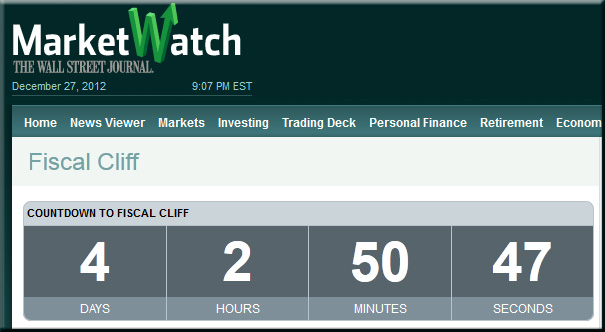From DSC:
One more straw is not what higher education needs in 2013…or is it?




From the January/February 2013 issue of The American Interest:
.
Excerpts (emphasis DSC):
…
The higher-ed business is in for a lot of pain as a new era of creative destruction produces a merciless shakeout of those institutions that adapt and prosper from those that stall and die.
…
But what happens when a limited supply of a sought-after commodity suddenly becomes unlimited? Prices fall. Yet here, on the cusp of a new era of online education, that is a financial reality that few American universities are prepared to face.
…
Anyone who can access the internet—at a public library, for instance—no matter how poor or disadvantaged or isolated or uneducated he or she may be, can access the teachings of some of the greatest scholars of our time through open course portals. Technology is a great equalizer.
Big changes are coming, and old attitudes and business models are set to collapse as new ones rise. Few who will be affected by the changes ahead are aware of what’s coming. Severe financial contraction in the higher-ed industry is on the way, and for many this will spell hard times both financially and personally. But if our goal is educating as many students as possible, as well as possible, as affordably as possible, then the end of the university as we know it is nothing to fear. Indeed, it’s something to celebrate.
* The old way:
Colleges rise as they reject — from online.wsj.com
Schools invite more applications, then use denials to boost coveted rankings
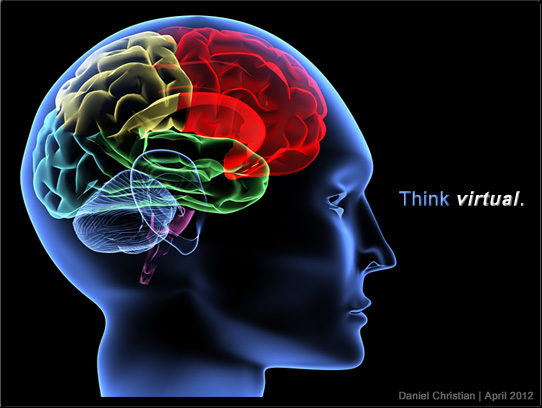
Also relevant/see:
Combine the trends listed in this graphic:
.
— from The Economics of Higher Education, Dec 2012 (pg 2)
…with the next several graphics…
.
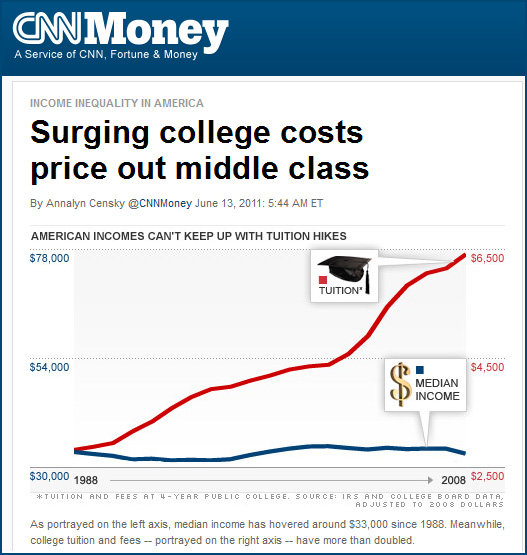
.
.
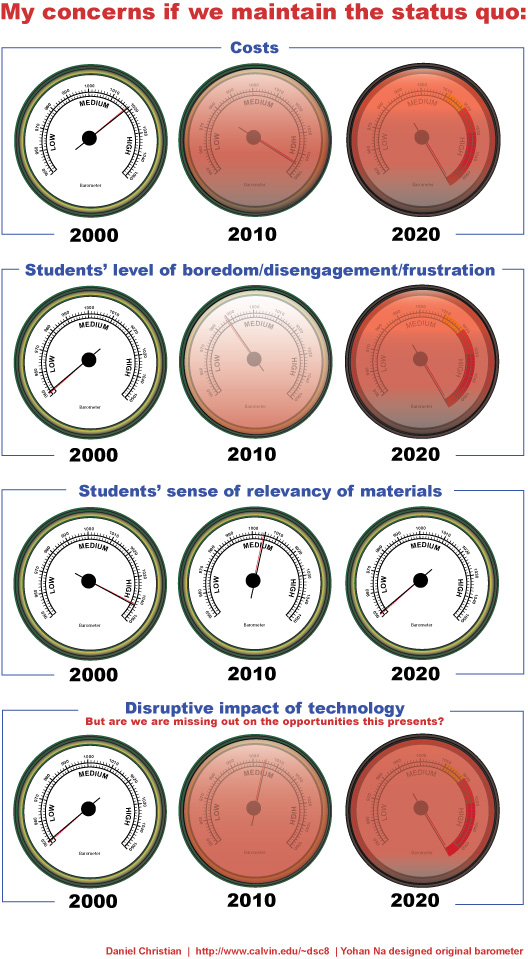
From 5/21/09
…and you can see that the Perfect Storm in Higher Ed has been amassed. Massive change is in the air. People will find a way to achieve their goals/objectives — one way or another. College is still a good call — but what “college” and “university life” will look like in 5 years will likely be very different from what they look like today.
There is no returning to the “good ol’ days” — things are not going back to the way they were 5-10 years ago. It’s time for massive — but controlled/intentional — experimentation within higher ed, to find out how best to use the Internet in order to promote learning (and, hopefully, to still make a living!).
.
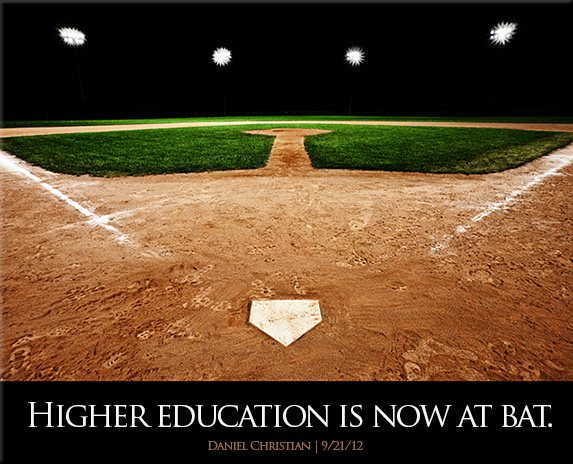
Some examples that illustrate that change is in the air…and that the conversation continues to move outside traditional institutions of higher education (I mention these not to dog higher ed, but to get us to innovate, to reinvent ourselves, and to stay relevant!)
Big idea 2013: College becomes optional — from LinkedIn.com by Ben Smith
Jailbreaking the degree: The end of the 4 year diploma — from onlineuniversities.com by Justin Marquis
Excerpt:
What’s wrong with getting a college degree? According to the grassroots movement, “Jailbreaking the Degree,” being pushed by radical education startup Degreed.com, quite a bit. The organization has identified several fundamental flaws with the long standing college degree process. It aims to overcome them and dramatically change the nature of learning and credentialing in the process. In order to justify their initiative they present some dramatic numbers on their website…
Degreed wants to jailbreak the college degree — from techcrunch.com by Rip Empson
Saying no to college — NYT.com by Alex Williams
Do a Google search on uncollege.org and see what you get
The rise of college alternatives— from huffingtonpost.com by Dan Schawbel
educreations.com: Teach what you know. Learn what you don’t.
Addendum on 12/14/12:
From DSC:
We had better step up the pace of innovating/experimenting – and move to do so quickly. But the problem is, moving quickly is not in the cultures of most of the more traditional institutions of higher education.
Also relevant:
From DSC:
Some reflections on New platform lets professors set prices for their online courses — from InsideHigherEd.com by Jeffrey R. Young
Excerpt:
Professors typically don’t worry about what price point a course will sell at, or what amenities might attract a student to pick one course over another. But a new online platform, Professor Direct, lets instructors determine not only how much to charge for such courses, but also how much time they want to devote to services like office hours, online tutorials, and responding to students’ e-mails.
The new service is run by StraighterLine, a company that offers online, self-paced introductory courses. Unlike massive open online courses, or MOOC’s, StraighterLine’s courses aren’t free. But tuition is lower than what traditional colleges typically charge—the company calls its pricing “ultra-affordable.” A handful of colleges accept StraighterLine courses for transfer credit.
.
From DSC:
The power of online-based marketplaces. We’ve seen it in other industries. Are we now going to see more of this within higher education as the unbundling of higher education seems to be a possibility? Will there be an increased importance of professors’ individual brands? Could be.
.
From DSC:
Congrats Burck & Co. on your continued innovative thinking and business models! Way to help keep a college education accessible to many!
Excerpt:
With the public’s continued focus on value and affordability, higher education finds itself at a critical juncture. Cost pressures and increased global demand for access have given rise to innovations that have unleashed new delivery models into the education marketplace. Such innovation is required if universities are to thrive, compete, and bring new relevance and meaning to the value of college in the 21st century.
Also see:
From DSC:
Experimentation. Innovation. Experimentation. Innovation. Fail. Fail. Succeed. Fail. Succeed. Fail.
From DSC:
Mr. Rob Bobeldyk and I were brainstorming last week about the need to create A Center for Innovation — a smaller organization within our overall organization — that can be far more nimble and responsive. Such a Center could be:
As I discovered HBR’s interview with John Kotter today, I felt our idea/direction/brainstorming is heading in the right direction!
.
That is, we are trying to keep the plane in flight while making some significant changes. Put another way, we are trying to keep the bread and butter in tact while experimenting with new business models and/or new products and services.
Kotter’s “Dual Operating System” affirms that a new/smaller/more nimble organization is appropriate. Here are some graphics of Kotter’s “dual operating system”:
.
.
.
The work of Christensen, Horn, and Johnson is highly-relevant here as well:
Addendums on 11/20/12:
.
From DSC:
I wonder how MOOCs focused on language will go…? It could be great to practice a language from folks all around the world — or will it be chaotic? Different accents. Real-world speaking and listening. Real world conflict, perhaps, as well. But it seems like there could be some effective learning going on — at least “on paper”. I wonder, too, if 1/2 of the time folks could speak one language — and would be the students during that part of the class — while the other 1/2 of the time they speak another language — and would be the “teachers.”
.
And for yet another item on innovation within higher ed! Whew!
College crackup and the online future — from bloomberg.com by Mark C. Taylor
.

Illustration by Keith Shore
Excerpt:
In the coming decade, emerging technologies will thoroughly transform higher education. Although distance learning and computer-assisted education have been around since the 1960s, financial pressures are forcing institutions to develop aggressive online programs.
…
These practical considerations shouldn’t overshadow one of the most promising innovations that online education will bring: The very structure of knowledge will change.
…
As students mix and match courses online, pressure will increase for professors to develop classes that integrate different approaches and disciplines.
.
.
Also see:
From DSC:
Creating “Innovation Labs” within each institution of higher education sounds like a good idea to me…we can experiment with things at smaller scales and see what works and what doesn’t.
Also see:
Take a lesson from Apple: A strategy to keep customers in your ecosystem — from forbes.com by Alonzo Canada
Excerpt (emphasis DSC):
1. Set focused, strategic targets.
2. Create a portfolio of experiments. Like Apple or Mercedes Benz, once you have focused, strategic targets set, create a series of experiments. A general rule of thumb is the 7-2-1 rule: one experiment should be big and relatively safe. Two experiments should be slightly more risky and moderately sized. Then seven experiments should be highly risky and low cost. These experiments can be scaled accordingly across teams, business units, and the entire company. 3M is one of the first companies to mandate that its employees spend 20% of their time thinking up blue sky ideas beyond its current lines of business and this is how Post-It Notes were born. Art Fry, an engineer at 3M wanted to find a better way to manage notes in his hymnal on Sundays at church.
3. Leverage learnings to inform new experiments.
Yahoo! and Samsung form multi-year partnership to deliver Interactive TV — from dailyfinance.com by Business Wirevia The Motley Fool
Partnership to provide real-time, enhanced entertainment and advertising to homes across the United States
Excerpt:
SUNNYVALE, Calif. & RIDGEFIELD PARK, N.J.–(BUSINESS WIRE)– Yahoo! (NAS: YHOO) and Samsung today announced an expanded multi-year partnership to integrate Yahoo!’s Broadcast Interactivity platform into Samsung 2012 Smart TVs. Yahoo! Broadcast Interactivity, powered by its automatic content recognition (ACR) technology, SoundPrintTM, will be deployed in Samsung’s SyncPlus platform, enabling new opportunities for intelligent content discovery, advertising and engagement, bringing an unprecedented level of interactivity in the living room.
.
From DSC:
Another steps towards:
![The-Living-Class-Room-Daniel-S-Christian---July-2012 The Living [Class] Room -- by Daniel Christian -- July 2012 -- a second device used in conjunction with a Smart/Connected TV](http://danielschristian.com/learning-ecosystems/wp-content/uploads/2012/07/The-Living-Class-Room-Daniel-S-Christian-July-2012.jpg)
.
A fifth of TV sets connected to the Internet by 2016 — from digitaltvresearch.com
.
.
Welcome to Star Scholar U., where a personal brand is the credential — from The Chronicle by By Jeffrey R. Young
.
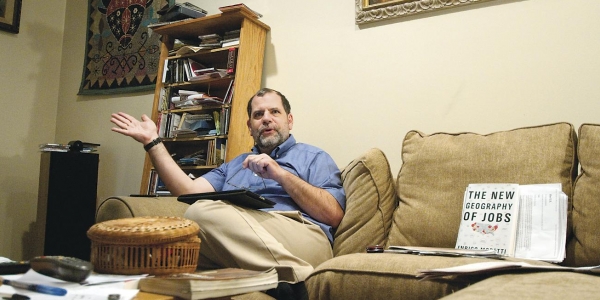
Keri Rasmussen for The Chronicle
Tyler Cowen, an economics professor at George Mason U., helped build an online-education site, Marginal Revolution U, based on a blog he runs with Alex Tabarrok. “In part we did it just to show it could be done—that you can have a Web site which looks nice and works,” Mr. Cowen said.
Excerpt:
A new kind of university has begun to emerge: Call it Star Scholar U.
Professors with large followings and technical prowess are breaking off to start their own online institutions, delivering courses with little or no backing from traditional campuses.
Founding a university may sound dramatic, but in an era of easy-to-use online tools it can be done as a side project—akin to blogging or writing a textbook. Soon there could be hundreds of Star Scholar U’s.
.
5 perspectives on the future of the human interface — from techcrunch.com by Alex Williams
Excerpt:
The next generation of apps will require developers to think more of the human as the user interface. It will become more about the need to know how an app works while a person stands up or with their arms in the air more so than if they’re sitting down and pressing keys with their fingers.
Also see:
.
Rethinking carrots: A new method for measuring what players find most rewarding and motivating about your game — from gamasutra.com by Scott Rigby, Richard Ryan
Excerpt:
The Player Experience of Need Satisfaction model (PENS) outlines three basic psychological needs, those of competence, autonomy, and relatedness, that we have demonstrated lie at the heart of the player’s fun, enjoyment, and valuing of games. By collecting players’ reports of how these needs are being satisfied, the PENS model can strongly and significantly predict positive experiential and commercial outcomes, in many cases much more strongly than more traditional measures of fun and enjoyment. And despite the simplicity of the model conceptually, it shows promise as a “unified theory” of the player experience by demonstrating predictive value regardless of genre, platform, or even the individual preferences of players.
.
Pearson project will let professors mix free and paid content in e-textbooks — from The Chronicle by Alisha Azevedo
Excerpt:
Pearson, a major textbook publisher, continued its push into digital education on Monday by introducing a service that allows instructors to create e-textbooks using open-access content and Pearson material.
.
A river of data — from educationnext.org by Bror Saxberg
Making the learning experience more effective
.
How should teaching change in the age of Siri? –– from MindShift
Excerpt:
Short of banning smartphones (a short-term solution, at best), the evolution of artificial intelligence services like Siri means that there will be a shift from a focus on finding the answer as the endpoint to a greater focus on analysis. You have the answer, but so what? What does that answer mean in a real-life situation?
.
Degreed launches crowdfunding campaign for reimagined ‘digital diploma’ — from gigaom.com by Ki Mae Heussner
San Francisco startup Degreed is challenging the traditional college diploma with an online service that tracks and scores educational achievements from established institutions as well as new online learning platforms. Ahead of a public launch in 2013, Degreed this week began a crowd funding campaign.
.
A capitalist’s dilemma, whoever wins on Tuesday — from the New York Times by Clayton Christensen
Excerpt (emphasis DSC):
In a way, this mirrors the microeconomic paradox explored in my book “The Innovator’s Dilemma,” which shows how successful companies can fail by making the “right” decisions in the wrong situations. America today is in a macroeconomic paradox that we might call the capitalist’s dilemma. Executives, investors and analysts are doing what is right, from their perspective and according to what they’ve been taught. Those doctrines were appropriate to the circumstances when first articulated — when capital[From DSC: or from an educational perspective, we could use the word information] was scarce.
But we’ve never taught our apprentices that when capital is abundant and certain new skills are scarce, the same rules are the wrong rules. Continuing to measure the efficiency of capital prevents investment in empowering innovations that would create the new growth we need because it would drive down their RONA, ROCE and I.R.R.
.
Gartner sees 821M unit smart device mkt in 2012; 1.2B 2013 — from forbes.com by Eric Savitz
.
Business model innovation: A blueprint for higher education — from Educause by Christine Flanagan
Excerpt:
Business model innovation is one of the most challenging components of 21st-century leadership. Making incremental improvements to a business model—creating new efficiencies, expanding into adjacent markets—is hard enough. Developing and experimenting with new business models that truly transform how an institution delivers value (while continuing to drive the performance of the current business model) is exceptionally difficult. Yet nowhere is the imperative for business model innovation more prevalent or more relevant than in higher education, which is under intense scrutiny and facing rising costs and potential disruption from all angles.
To compete in a world where the shelf life of business models is shortening, higher education leaders need the tools, skills, and experience to envision, test, and implement new business models. They must believe in the power of experimenting, in the real world, with a network of collaborators who have the audacity to change everything. As the legendary innovation mastermind Clayton Christensen says: “You don’t change a company by giving them ideas. You change them by training them to think a different way.”1
Why is American Higher Education so averse to change? — from Jeff Selingo
Excerpt:
In my 15 years of reporting on higher education—and especially in the last year as I have reported for my forthcoming book on the future of higher education—colleges and universities have come to remind me of other American content industries that have been disrupted in the last decade: newspapers and magazines, music, and book publishing. In many ways, colleges and universities are following the same playbook:
From DSC:
I hope that higher education learns from what the Internet did to other industries. I hope we can reinvent ourselves, stay relevant, and ride the wave to create WIN-WIN situations…and not get crushed by it.
Does the U.S. accreditation system discriminate against online learning? — from Tony Bates
Excerpt:
Furthermore, problems remain in both Canada and the USA if students want to start taking online courses from an institution out of state or province then use that for advancement by transferring to a local university. The answer of course is more flexible credit transfer arrangements, more flexible prior learning assessment, and challenge exams, where students can demonstrate their learning without having to work through courses they have already taken elsewhere. Even some of the more prestigious research universities in Canada are realising that they need to be more flexible if they are to attract lifelong learners, for instance. Thus it’s as much up to the institutions as the regulators to ensure there is some flexibility in the system for students taking out of state or out of province online courses.
Yes, there needs to be sensible protections against fraud and fly-by-night online operators, but too often the restrictions, regulations and barriers are steeped in practices that no longer apply in an open, knowledge-based society. Every institution should be examining the structure of its courses, its admission requirements, its arrangements for credit transfer and prior learning assessment, and its strategy for lifelong learning, if it is to be fit for purpose in the 21st century. It is not an issue just of online learning.
From DSC:
Questions I often ponder re: accreditation:
